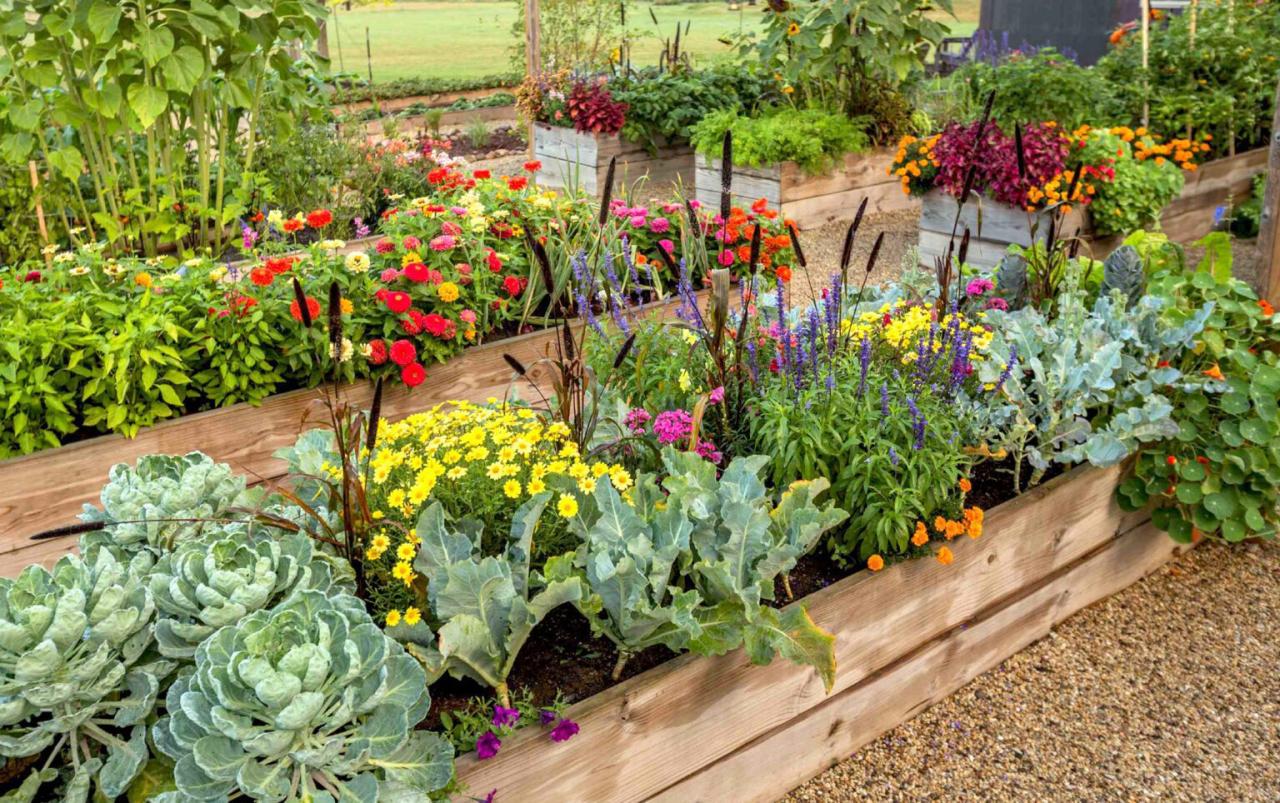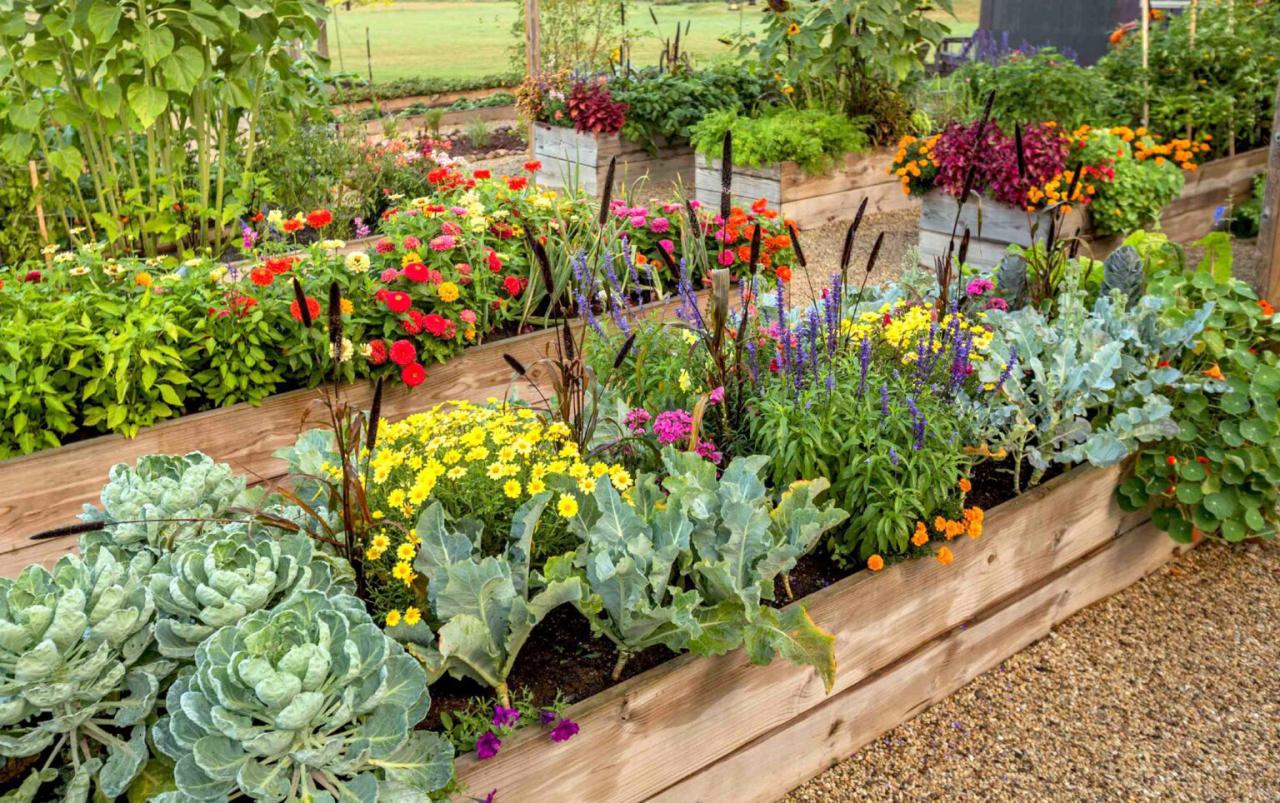Raised Bed Gardening Mistakes: Plants to Avoid – Embarking on a raised bed gardening journey can be a rewarding experience, offering greater control over soil conditions and a more efficient use of space. However, certain plants are simply not well-suited for this type of gardening, and their inclusion can lead to frustration and disappointment.
This article explores the pitfalls of choosing the wrong plants for your raised beds, providing insights into which species to avoid and why.
Understanding the limitations of raised beds is crucial for success. These structures, while offering benefits, often have less soil volume and a different microclimate compared to traditional gardens. This can affect plant growth, especially for species with specific soil requirements or those prone to root rot in confined spaces.
Additionally, the limited space in raised beds makes it challenging to accommodate large or invasive plants, which can quickly overwhelm the area.
Raised Bed Gardening Mistakes: Plants to Avoid
Raised bed gardening offers a fantastic way to cultivate a thriving garden, even in challenging soil conditions or limited spaces. It provides excellent drainage, promotes healthy growth, and allows for greater control over the growing environment. However, even with the advantages, there are certain challenges that raised bed gardeners face.
When it comes to raised bed gardening, choosing the right plants is crucial. While some plants thrive in these elevated environments, others struggle. If you’re considering growing hanging plants, be sure to weigh the pros and cons as outlined in The Pros and Cons of Growing Hanging Plants.
Understanding these factors can help you avoid potential mistakes and ensure a successful gardening experience in your raised beds. For instance, if you’re aiming for a thriving garden, it’s wise to steer clear of plants that are prone to root rot or require extensive watering, as these conditions are common in raised beds.
One of the most common mistakes is selecting plants that are not suitable for the confined environment of a raised bed. This can lead to stunted growth, disease, and even plant death.
When it comes to raised bed gardening mistakes, choosing the wrong plants can lead to a variety of issues, including attracting unwanted pests. One common problem is the appearance of pesky flying gnats, often drawn to moist soil conditions.
If you find yourself battling these tiny insects, you’ll need to take steps to control them, such as the methods outlined in this helpful guide: How to Deal with Flying Gnats Around Your Plants. By understanding the potential pitfalls of certain plant choices and taking preventative measures, you can avoid these pesky gnats and create a thriving raised bed garden.
Plants to Avoid in Raised Beds
Selecting the right plants for your raised bed is crucial for success. Here are some plants that are generally not well-suited for raised beds:
- Vines:Vines, such as cucumbers, pumpkins, and beans, are vigorous growers that can quickly overwhelm a raised bed. Their extensive root systems can become overcrowded and compete for resources.
- Deep-Rooted Plants:Plants with deep root systems, like trees and shrubs, may struggle in the limited depth of a raised bed. Their roots can become restricted, leading to stunted growth and poor health.
- Water-Intensive Plants:Plants that require constant moisture, such as water lilies and rice, are not suitable for raised beds. Raised beds tend to dry out faster than traditional gardens, making it difficult to maintain the necessary moisture levels.
- Heavy Feeders:Plants that are heavy feeders, such as broccoli, cauliflower, and tomatoes, may deplete the soil nutrients in a raised bed quickly. This can lead to poor growth and reduced yields.
Plants That Don’t Thrive in Raised Beds: Raised Bed Gardening Mistakes: Plants To Avoid
Raised beds offer many benefits, but they can also pose challenges for certain plants. The unique environment of a raised bed, with its limited soil volume and potential for rapid drainage, can create conditions that are not ideal for all species.
Plants Requiring Specific Soil Conditions
Raised beds often have a different soil composition and pH compared to the surrounding garden soil. Some plants have specific soil requirements that may not be met in a raised bed. For example, blueberries thrive in acidic soils with a pH of 4.5 to 5.5.
In a raised bed with neutral or alkaline soil, blueberries may struggle to grow and produce fruit. Similarly, plants like rhododendrons and azaleas prefer acidic soil conditions.
Plants Prone to Root Rot or Other Diseases
The restricted soil volume and potential for waterlogging in raised beds can create conditions that favor root rot and other diseases. Plants with shallow root systems or that are susceptible to root rot, such as tomatoes, peppers, and cucumbers, may be more prone to these problems in raised beds.
Root rot is a common problem in raised beds, especially if the soil is too wet or poorly drained.
Plants Too Large or Invasive for Raised Beds
Raised beds have limited space, and certain plants may grow too large or become invasive within this confined environment. Vines, such as morning glories and cucumbers, can quickly overwhelm a small raised bed, potentially shading out other plants. Similarly, large shrubs or trees may not be suitable for raised beds as their root systems can extend beyond the boundaries, causing structural damage or competition for resources.
Considerations for Plant Selection

Choosing the right plants for your raised bed is crucial for their success. By understanding the unique conditions of your raised bed and the needs of your chosen plants, you can ensure a thriving garden.
Sunlight and Drainage
Sunlight and drainage are two key factors to consider when selecting plants for your raised bed. Raised beds often have different drainage characteristics than in-ground gardens. * Sunlight:Determine the amount of sunlight your raised bed receives throughout the day.
Some plants thrive in full sun (6+ hours), while others prefer partial shade (4-6 hours) or even full shade (less than 4 hours).
Drainage
Raised beds can dry out more quickly than in-ground gardens. Choose plants that tolerate well-drained soil, especially if your raised bed is made of materials that promote drainage, like wood or plastic.
Plant Size and Growth Habit
Consider the size and growth habit of the plants you choose. A small plant will not thrive if it’s crowded by larger plants. * Mature Size:Research the mature size of each plant you’re considering. This will help you determine how much space each plant needs to grow and prevent overcrowding.
Growth Habit
Consider the growth habit of each plant. Some plants are compact, while others are vining or spreading. This will help you choose plants that complement each other and fill the space effectively.
Plant Compatibility
When choosing plants for your raised bed, it’s important to consider their compatibility in terms of growth and nutrient requirements. * Companion Planting:Some plants benefit from being grown together. For example, basil is often planted near tomatoes to repel insects.
Research companion planting to identify beneficial plant pairings.
Nutrient Needs
Different plants have different nutrient needs. Choose plants with similar nutrient requirements to avoid competition for essential nutrients. Consider using a soil amendment to meet the needs of your plants.
Alternatives to Avoidable Plants

While certain plants are not well-suited for raised beds, there are numerous alternatives that thrive in these environments. These alternatives offer similar aesthetic appeal, culinary value, or ecological benefits, while also being more adaptable to the unique conditions of raised beds.
By selecting plants that are well-suited for raised beds, gardeners can maximize their success and minimize the challenges associated with growing certain species.
Choosing Native or Adapted Plants, Raised Bed Gardening Mistakes: Plants to Avoid
Selecting plants that are native to the region or adapted to local conditions offers significant benefits for raised bed gardening. Native plants are naturally suited to the climate, soil, and pests of the area, requiring less care and resources to thrive.
These plants also contribute to the local ecosystem by supporting pollinators, providing habitat for wildlife, and promoting biodiversity.
When choosing native or adapted plants, consider factors such as:
- Sunlight Requirements:Ensure the plant’s light needs align with the amount of sunlight your raised bed receives.
- Soil Preferences:Select plants that thrive in the soil type and pH of your raised bed.
- Water Needs:Choose plants with water requirements that match the watering practices you can provide.
- Hardiness Zone:Ensure the plant can withstand the minimum winter temperatures in your region.
Examples of Suitable Alternatives
Here are some examples of suitable alternatives for plants that are often problematic in raised beds:
Problematic Plant |
Suitable Alternative |
Comparison |
|---|---|---|
Tomato (Solanum lycopersicum) |
Pepper (Capsicum spp.) |
While tomatoes are known for their susceptibility to diseases and pests in raised beds, peppers are generally more resistant. Peppers also thrive in well-drained soil, a key characteristic of raised beds. |
Cucumber (Cucumis sativus) |
Zucchini (Cucurbita pepo) |
Cucumbers often require extensive support and can be prone to diseases in raised beds. Zucchini, on the other hand, is more compact and less susceptible to disease. |
Lettuce (Lactuca sativa) |
Spinach (Spinacia oleracea) |
Lettuce can be prone to bolting (premature flowering) in raised beds, especially during warm weather. Spinach is more tolerant of warmer temperatures and can be harvested over a longer period. |
Basil (Ocimum basilicum) |
Oregano (Origanum vulgare) |
Basil is susceptible to pests and diseases in raised beds. Oregano, a hardy herb, is more resistant and offers a similar flavor profile for culinary purposes. |
Troubleshooting Raised Bed Problems
Raised bed gardening offers numerous benefits, but it’s not without its challenges. Like any gardening method, raised beds can experience problems that require attention and solutions. Understanding the common issues and their causes allows gardeners to proactively address them and ensure healthy plant growth.
Common Raised Bed Problems and Solutions
Identifying the underlying causes of raised bed problems is crucial for finding effective solutions. Here’s a breakdown of some common issues and their corresponding solutions:
Conclusion
By understanding the common mistakes associated with plant selection for raised beds, you can significantly increase your chances of success. Remember that raised beds offer a unique environment, and not all plants thrive in these conditions. Careful consideration of plant needs and the limitations of raised beds is essential for a thriving garden.
Experimentation and Learning
Gardening is a journey of discovery, and raised beds provide an excellent opportunity to experiment with different plants and techniques. Don’t be afraid to try new things and learn from your experiences. Each failed attempt provides valuable insight into the specific needs of your garden and the best way to cultivate a successful raised bed ecosystem.
Seeking Expert Advice
For personalized guidance, consulting with local gardening experts can provide invaluable insights tailored to your specific location and growing conditions. Local nurseries, garden clubs, and agricultural extension offices are excellent resources for obtaining advice and learning from experienced gardeners in your area.
Concluding Remarks
As you navigate the world of raised bed gardening, remember that careful plant selection is key to success. By avoiding plants that struggle in these conditions, you can maximize your chances of flourishing crops and a rewarding gardening experience.
Don’t be afraid to experiment with different varieties, but always consult with local experts to ensure you’re choosing plants that are well-suited to your specific needs and environment.
Query Resolution
What are some common signs that a plant is not thriving in a raised bed?
Common signs include stunted growth, yellowing leaves, wilting, and susceptibility to pests or diseases.
Can I amend the soil in my raised bed to accommodate plants that require specific conditions?
While amending the soil can improve drainage and nutrient content, it’s often difficult to replicate the exact conditions needed for some plants, particularly those requiring specific soil pH levels.
